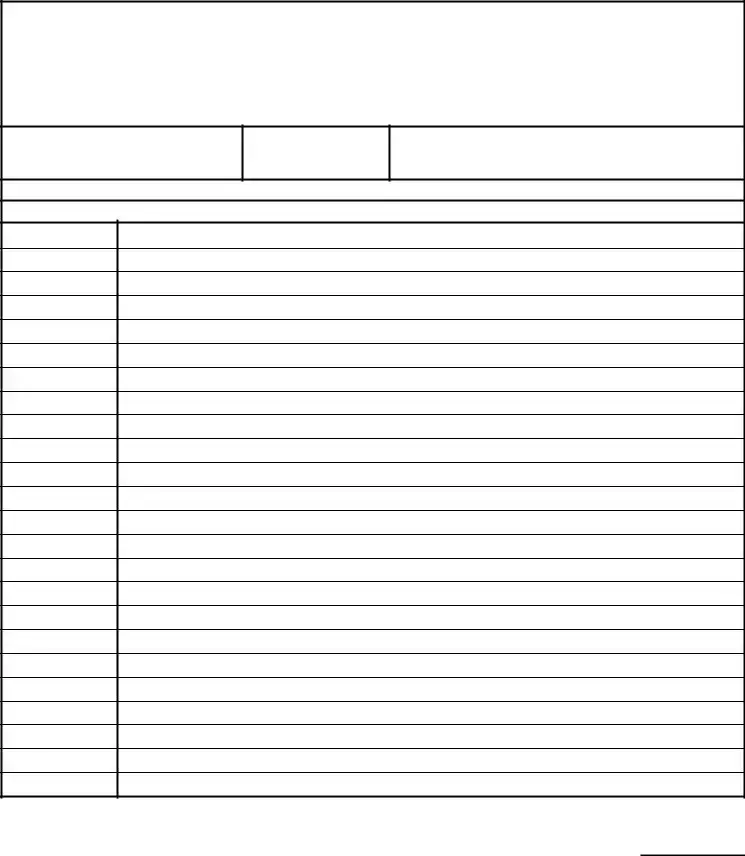The Incident Report Form, similar to the Security Guard Daily Report Sample form, is utilized to record any unusual events, injuries, or safety concerns that occur at a workplace or public area. Like the Security Guard Daily Report Sample, this form typically includes spaces for the date, time, location of the incident, a detailed account of what happened, and the names of any witnesses. The key function is to document incidents meticulously for future reference or legal considerations, ensuring that all pertinent information is accurately captured and reported.
A Maintenance Request Form shares similarities with the Security Guard Daily Report by providing a structured means for reporting issues needing attention, such as repairs in a building. It includes sections for describing the problem, its location, and the date, paralleling the way security issues are reported in the daily report. This form ensures that maintenance teams can track and address building issues systematically, much like security teams manage safety concerns.
The Visitor Log Book is akin to the daily report form due to its role in recording entries, but focuses primarily on tracking the arrival and departure of visitors to a facility. It usually contains visitor names, company affiliation, date, and time of visit, paralleling how security checks are logged. This document is vital for maintaining security and safety, allowing for an audit trail of individuals present at a site at any given time.
Shift Change Report Forms bear resemblance to the Security Guard Daily Report in their use for transitioning information between outgoing and incoming personnel, ensuring continuity in operations. These forms often summarize activities, highlight pending tasks, and note any incidents or anomalies, aligning with how security reports capture day to day or shift specific occurrences. This ensures that each shift starts well-informed of the situation they are inheriting.
The Police Report Form, used by law enforcement to document criminal incidents, parallels the Security Guard Daily Report in structure and purpose. It captures comprehensive details such as the date, time, nature of the incident, and involved parties, similar to how security incidents are recorded. This form is essential for legal proceedings and investigations, ensuring all relevant facts are systematically reported and available for review.
Equipment Inspection Checklists serve a similar purpose to the Security Guard Daily Report by providing a structured method for recording the condition and functionality of equipment or machinery at regular intervals. Like security patrols and checks, these forms include specifics on the item inspected, findings, and any defects or maintenance required. They ensure that equipment is safe and operational, mitigating risks in a workplace.
Emergency Action Plan Reports are designed to document procedures and actions taken during drills or actual emergencies, paralleling the Security Guard Daily Report’s function of logging significant security-related occurrences. These reports detail the emergency type, response actions taken, and evaluation of the response effectiveness. The aim is to review and improve preparedness and response strategies, ensuring the safety and security of all individuals involved.
The Fire Inspection Report captures details of fire safety checks within a building or area, similar to how the Security Guard Daily Report records safety and security checks. It details compliance with fire regulations, noting any potential hazards or violations, and suggesting corrective actions. Like security patrols, these inspections are preventive measures aimed at ensuring the safety and well-being of occupants and property.
Vehicle Inspection Forms relate to the Security Guard Daily Report by being another preventive measure, focusing on assessing the condition of a vehicle before use. They include checks for mechanical issues, safety equipment, and overall roadworthiness, much like security checks evaluate an environment's safety and security. These forms are crucial for preventing accidents and ensuring vehicles are safe and reliable for operation.
Finally, the Health and Safety Meeting Minutes document discussions, decisions, and actions related to workplace health and safety issues, capturing the collective efforts to manage hazards, much like the Security Guard Daily Report notes individual security concerns. These meeting minutes serve as a record of commitment to maintaining a safe working environment, outlining the steps taken and planned to prevent accidents and incidents.

